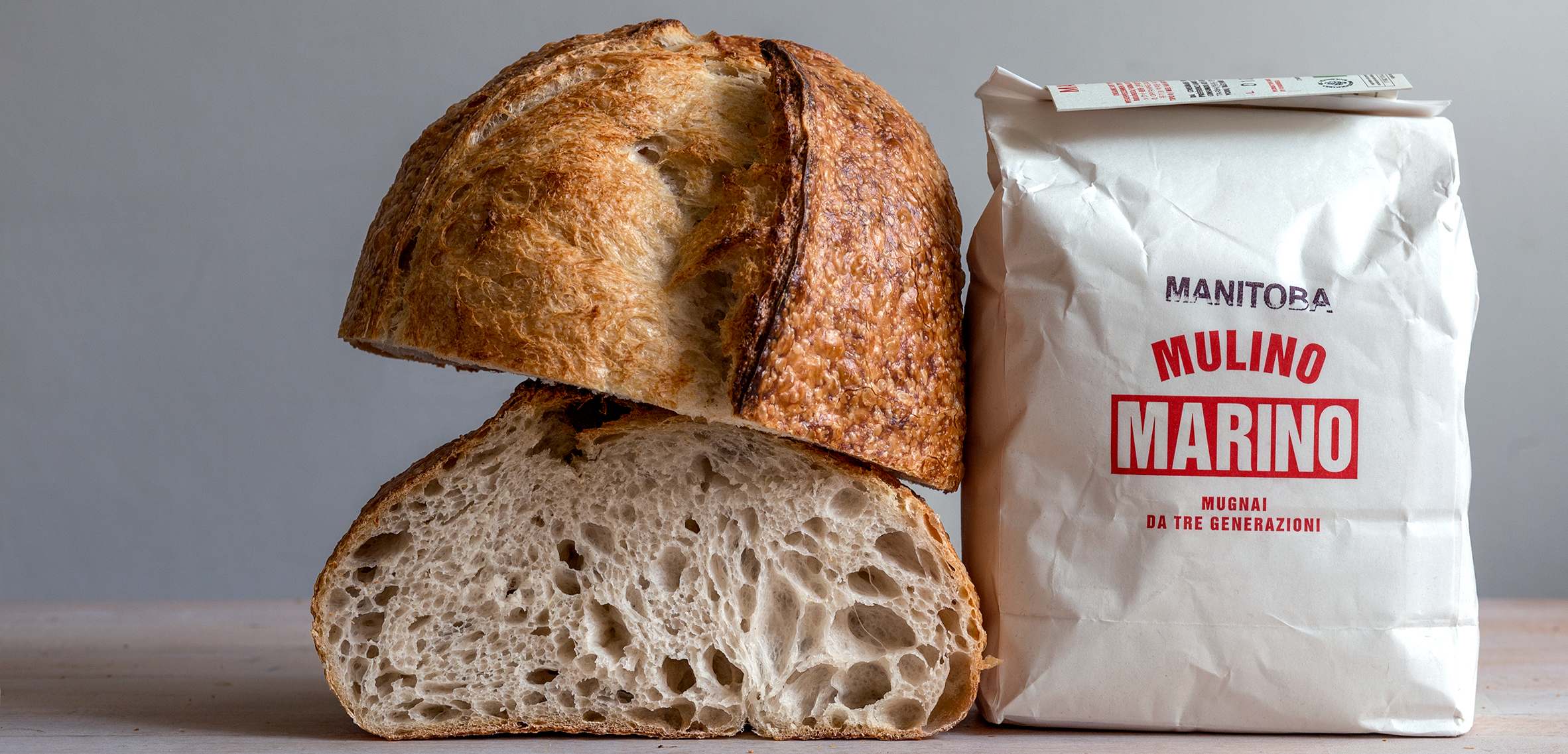If you put wheat flour, water (and some salt, if you like) in a bowl, mix it well, roll pieces of it thin and cook it on a hot metal bakestone you’ll get one of the earliest forms of bread, what’s known as unleavened flatbread. Easy to make, utterly delicious: today there are many people who make and enjoy this bread pretty much the way it was made hundreds of years ago. Perhaps the flour today is more refined and whiter, the texture lighter and more delicate, but it’s still one of the basic forms of bread.
Yet, this sort of bread is what you might call un-risen. And that’s because we haven’t added any yeast or soda (as in baking powder) to make it rise.
Add yeast to water, then add flour, and what will happen is that the yeast is able to replicate, and also turn simple sugars into gas (and water) through a process called fermentation. Quite amazing. And this causes bread to rise.
The packet yeast you buy, like this yeast we sell at BakeryBits, is able to make air bubbles in dough super easily. You can also use a sourdough starter, like the one we sell (or make your own), as that contains yeast too. Or even use a chemical like bicarbonate of soda to make the dough bubble up with gas when its baking. So it’s by adding one of these ingredients that air bubbles are basically able to get bread to rise.
But really there are others factors at work, and if you’re thinking that the rise in your bread isn’t as good as it could be then here’s your three point checklist for getting bread to rise well.
Q1. Have you added yeast (or sourdough, or baking powder, or bicarbonate of soda), and have you added enough?
Do organise yourself the make sure you’ve added your yeast (or sourdough etc). I have to confess to you, as many others bakers will, that there are days when we completely forget to add yeast to the dough. In bakeries, where it would be a commercial disaster if this happens, we put the yeast in a little container or cup. That way, if the cup is empty we’re pretty sure it’s in the dough.
Now how much is enough yeast? For dried fast action yeast, try adding 1g per 100g flour for a medium-speed rise (double the weight for fresh yeast) that will take 90-120 minutes to rise before shaping. This is a good rule of thumb but you might prefer more or less yeast according to how quickly or slowly you want the rise to take.
Q2. How firm or soft is your dough?
The higher the ration of water to flour in your dough, the quicker the rise. This is because this process called fermentation happens faster for the yeast if the mixture is soft (with more water added) as this keeps the cell walls very soft. And if your dough is drier it’s the opposite effect, the dough will take longer to rise.
Q3. How warm is your dough as it rises?
The fermentation and the increase in number of yeast cells, happens faster when the dough is warmer. Then, because it’s warmer, and the number of yeast cells is growing, the rise happens fast still. So you want it warm, say about 25C for a medium rise. Or cooler to slow the rise down, or warmer still if you want to speed the rise up.
Q4. Will your flour make the most of your yeast?
White flours can all look the same, and some millers are very keen to grab every sale they’ll label the flour “good for breadmaking” even if it’s not so good at that. Inside that flour it’s all a bit Willy Wonker, a veritable candy festival for yeast. In order to multiply and ferment, yeast and bacteria make use of damaged starches and simple sugars found in the flour. There’s a substance called fructan, a combination (or “chain”) of mostly fructose molecules with glucose. And another, an enzyme called invertase, that can release sucrose (a simple sugar) molecules from the grain. Combine this with maltose, another naturally found sugar, and the yeast have everything they need to ferment and create gas in the dough.
Well, almost. Some wheat flours, according to the quality and variety of grain used, are higher or lower in simple sugars. If a flour is low in simple sugars the dough can be slow to rise. The indicator if this is the case is the crust of the dough: if it looks relatively pale after a medium bake, this can be a sign. Another sign is if the slice of bread takes a long time to toast. In these cases you may want to add more simple sugars, and the easiest way is to add malt (either extract or powder) or even sugar.
But don’t overdo this. What can happen if you do is that the yeast in the dough slows down because of high levels of sugar. Every year, when it’s hot cross bun time this is one of the reasons you might get heavy, leaden buns. If this is the case, either giving the dough a very warm rise at 28c – 32C can overcome it.











